Imperial Retirement and Academic Tradition
Yuste and Salamanca, May 21 and 22
If you had ruled half the known world, what location would you choose for your retirement home? Well, sure, but Emperor Charles V hadn’t heard of Sun Valley in 1555. Instead he picked La Vera Valley west of Madrid in Extremadura. Not a bad choice, as we discovered when we stopped there en route from Seville to Salamanca.
A devout man, Charles built a wing, with only four modest rooms that he occupied, on the side of the small monastery at Yuste, which enjoys a temperate climate. As we saw, his bedroom opens onto the chapel so that he could participate in the mass from his bed when gout pained him after an excess of red wine and anchovy consumption. Two of the other rooms command a superb view of countryside, and with some fifty servants in attendance his life was far from Spartan. Unfortunately, Charles lasted less than two years in these digs and was buried, as he had ordered, beneath the chapel chancel until his son Philip II moved his remains to the far more imperial surroundings of El Escorial.
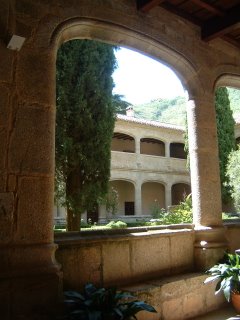
Monastery at Yuste
Salamanca is to Spain as Oxford and Cambridge are to England and the Sorbonne is to France. Church and university were closely linked as the cathedrals—old (Romanesque) and new (Gothic)--are within a stone’s throw from the heart of the university and students traditionally visited certain chapels to pray for divine assistance before exams. But they had their differences, too, as memorialized by the statue of one professor, Fray Luis de Leon. Seized in the middle of a lecture by agents of the Inquisition, he spent four years in prison and, upon his release, returned to the university to resume his lecture where he had been interrupted. Academics were tough in those days. His lecture hall, rough hewn benches and all, is preserved as it was. Also preserved is the hall where Rector Miguel de Unamuno, old and in failing health, defended the university against the slurs of a crazed Franco general during the Civil War.
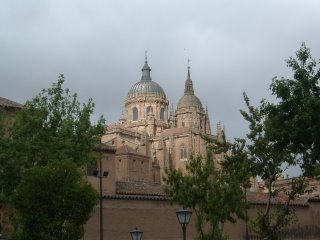
Cathedral
The architecture of Salamanca is fascinating. The unusual Salamanca arches (see below) set the city apart, but it is best known for its plateresque facades. As we learned after arriving there, “plateresque” derives from the word for silversmith, for the stone carvers in Salamanca were able to achieve results comparable to those of workers in soft metals since their stone was unusually malleable when freshly cut. Hence, the university façade, which memorializes in great detail (top to bottom), Ferdinand and Isabella, Carlos V and his empress, and the pope and his cardinals.
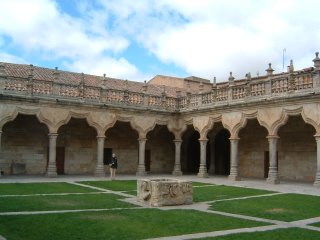
University courtyard with Salamanca arches
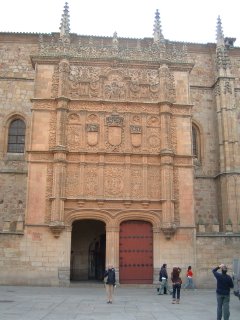
Plateresque facade at University
Salamanca’s Plaza Mayor tops its rival in Madrid in our opinion. We strolled down there for tapas our first evening and ended up in a bar called “El Reloj de la Plaza,” which we enjoyed so much that we decided on a return engagement. The crowd was a happy mixture of students, jubilados and in-betweens, all good natured. Our favorite tapa was the specialty of the house, a combination of potato, egg and sausage. We definitely want to return to Salamanca!
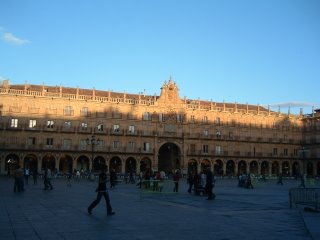
Plaza Mayor
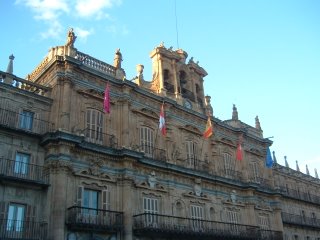
Plaza Mayor

0 Comments:
Post a Comment
<< Home